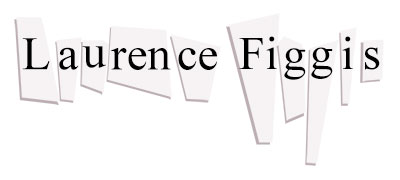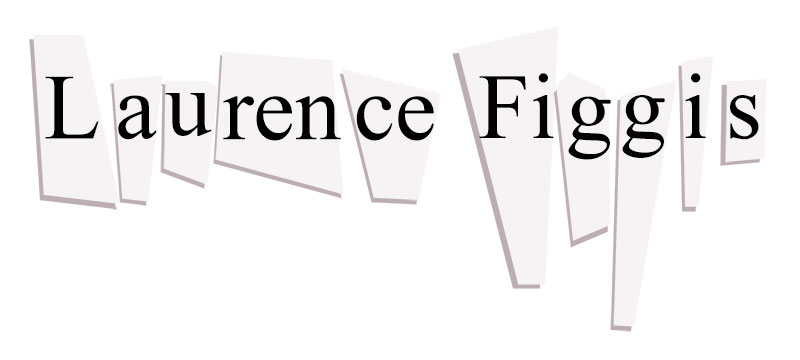Return to Oz
My prevailing memory of watching films in childhood is a moment of temporary blindness just after emerging from the cinema as my eyes struggled painfully to adjust to the sudden dramatic change in light levels. For me, this disorientating threshold between fantasy and reality was nearly always characterised by a slight case of post-traumatic-stress-syndrome. This was the age in which filmmakers for children looked to Pasolini and George Orwell for inspiration. In addition to the bunny-rabbit genocide of Watership Down (1978), we were treated to a unicorn holocaust in Legend (1985), the brutal massacre of the “gelflings” by the “skeksis” in The Dark Crystal (1982), the apocalyptic wages of the “nothing” in The Neverending Story (1984), not to mention the prodigious mullets sported by David Bowie in Labyrinth (1986) (which were enough to traumatise even the most hardy infant).
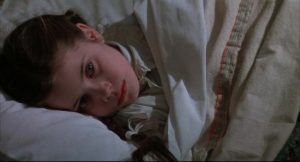
Return to Oz, 1985, dir. Walter Murch, Disney (film still)
Of all the films which enchanted and terrified me in equal measure my favourite was Return To Oz (1985). I was surprised to discover years later that Disney’s extremely belated sequel to The Wizard of Oz had bombed on its first release and had for the most part vanished into obscurity; though its genesis had been nothing if not auspicious.
Based on two of Frank Baum’s own literary sequels to the Wizard of Oz (Ozma of Oz and The Marvelous Land of Oz), the film was directed and co-written by Walter Murch, a respected Hollywood sound-editor who previous credits included Francis Ford Coppola’s Apocalypse Now (1979). Return to Oz was Murch’s only directorial work and by all accounts a labour of love, his dream project which he struggled to realise even in the face of threats by Disney to kill the production after the film had gone way-over schedule and budget. In the event it was thanks to Murch’s close friend George Lucas – who had just resolved the fantastically successful Star Wars saga (1977-83) – that Murch was able to complete the film, but this didn’t stop it from failing dismally at the box-office.
Critics blamed the film’s scandalous digression from MGM’s classic, which was of course entrenched in popular memory. Murch’s sojourn to the “dark side of the rainbow” is very different stylistically, and in terms of tone – there are no musical numbers and the mise en scène avoids entirely the plastic vaudeville aesthetic of the 1939 film, preferring a dull pallet of muted colours and realistic scenes filmed on location as well as the traditional sound-stages and matte-shots
The casting of Murch’s film likewise disrupts The Wizard’s continuity. Fairuza Balk, the young Canadian actress selected to play Dorothy after a nationwide search, was roughly half the age that Judy Garland had been when she took on her most iconic role. (In spite of this, she proves an asset, delivering a performance of great subtlety and gravitas for one so young, as emotionally key as Garland’s had been to the earlier film.)

Return to Oz, 1985, dir. Walter Much, Disney (film still)
Perhaps, overall, Return to Oz should be seen less as a conventional sequel than as a reflexive meditation on post-modern culture. Curiously the film succeeds in providing some critical perspective on the – still fashionable – forms of narrative decadence even as it exploits their “cinematic texture”. Images of fragmentation, entropy, multiple-mirroring, and decay reverberate through the film as Dorothy confronts the disintegration of her fantasy world, much like Tim Burton’s revisionist Alice (2010) or the harried girl protagonist of Guillermo Del Torro’s Pan’s Labyrinth (2006) (both of which owe a considerable debt to Murch’s film).
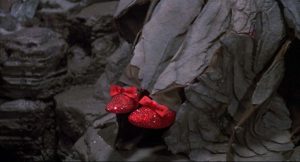
Return to Oz, 1985, dir. Walter Murch, Disney (film still)
The conflict of fiction and reality is made explicitly clear in the opening scenes which are meant to occur months after Dorothy has returned from her original adventure. Aunt Em and Uncle Henry, struggling to rebuild their farm after the ravages of the tornado and worried by their niece’s persistent accounts of talking tin-men and other impossible marvels, have delivered her up for electro-shock therapy treatment. Escaping the asylum, Dorothy soon finds herself transported back to Oz where her former Halcyon has fallen under a shadowy influence. The Yellow Brick Road has been destroyed, the Emerald City is in ruins, its occupants turned to stone as if by some Medusa’s gaze. And the entire once “laughter”-filled state of Oz has fallen under jurisdiction of the sinister Princess Mombie who never looks the same twice – owing to her stylish collection of interchangeable heads. Despite the fear evoked by Mombie and her punk-like minions, the Wheelers, she proves to be small-fry by comparison with her plutonic line-manager the Gnome King who it transpires is the agent of this sorcerous coup-d’état, having acquired the ruby slippers when they fell off Dorothy’s feet during her flight back from Oz.
As a trivial aside, you may recall that Baum wrote of silver not jewel-encrusted shoes (these were an invention of the MGM script-writers who had wanted to exploit the wow-potential of Technicolor more fully). In Murch’s version the iconic pumps function less as talismanic objects of wish-fulfilment than as supernatural WMD’s, much like Wagner’s or Tolkein’s rings. The Gnome King, a shifting mass of un-dead geological matter, becomes increasingly human as each of the remaining citizens of Oz succumb to his malign power; but perishes when the talking hen Billina lays an egg in his gullet.
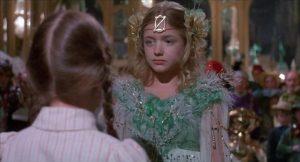
Return to Oz, 1985, dir. Walter Murch, Disney (film still)
In respect of its gender imagery, the film is interesting to compare with more recent and lucrative examples of the fantasy genre such as Harry Potter (2001-10), the film versions of The Lord of the Rings (2001-03) and the frenetic Star Wars prequels (1999-2005). Surprisingly many of the recent films prove more conservative and reactionary than their cold-war era progenitors, squeezing out the female viewpoint and confirming macho heroism for the post 9/11 generation. By contrast Murch’s film grants courage and autonomy to its female protagonist. There is no overstated romantic fate for Dorothy (she avoids the ubiquitous “marriage-plot” of her sisters in the animated fairytales); and in the end she subverts the history of Oz into a her-story – restoring its authentic status as a matriarchy governed by the wise (if rather melancholic) lost namesake of Oz- “Ozma”.
This talk was originally delivered for ‘Pecha Kucha 2: The Sound and the Fury’, at Tramway, Glasgow, 22nd July, 2010 (curated by Katy West).
